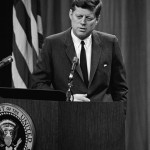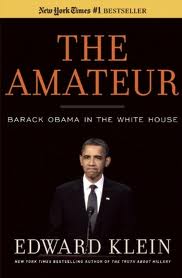 After most recessions, Gross Domestic Product (GDP) growth comes back with a strong minimum 5% increase/year. But not the
After most recessions, Gross Domestic Product (GDP) growth comes back with a strong minimum 5% increase/year. But not the recession of 2008-09…annual growth averaged under 2% for the eight years that Barrack Obama was President and the Civilian Labor Force Participation Rate diminished to 62.8%, the lowest it had been since 1978. Moreover, although the official unemployment rate was under 5%, it would have been about 12% if it were measured the way it was back in the year 2000, and over 20% if it were measured the way it was during the Great Depression in the 30’s.
recession of 2008-09…annual growth averaged under 2% for the eight years that Barrack Obama was President and the Civilian Labor Force Participation Rate diminished to 62.8%, the lowest it had been since 1978. Moreover, although the official unemployment rate was under 5%, it would have been about 12% if it were measured the way it was back in the year 2000, and over 20% if it were measured the way it was during the Great Depression in the 30’s.
So what happened under President Obama? Why not the usual strong growth? Business had a few trillion dollars that it held onto oversees, so why didn’t it spend its money to expand its operations and create millions of jobs in the U.S.? There’s a lot of reasons why business was cautious in expansion…and we need to understand what the problem was in order to continue to turn around today’s economy and foster substantial job growth (and the increased tax revenues that come with job growth). Of course, the Affordable Care Act (“Obamacare”) is filled with disincentives to job growth, especially full-time jobs, so it was partially responsible. The large number of regulations and tax increases under President Obama also added additional burdens on job creators and that’s another major cause.
But who am I to be pontificating on jobs and the economy? Well, I do have a masters degree in Government Administration from the University of Pennsylvania. And my degree is from the Wharton School in the U. of P., which is known for its econometric models of the economy. To be clear, however, my education was in government, not economics, though I did need to have economics and accounting courses as well as a statistics course in order to graduate from Wharton with my MGA long ago. I also worked for the Federal government for over40 years in various capacities, and have also worked for the state of Pennsylvania and the city of Philadelphia.
FORMER SUCCESSFUL QUICK RECOVERIES
Let’s put aside education and experience qualifications because, from my observations, ideology trumps education. I’ve seen PhD’s advocate really stupid positions, even in light of contradictory evidence. So I tend to look at the real world, what actually happens when a particular economic policy is followed and practiced.
I’ll start with the policies used by President John F. Kennedy in the early 1960s. When confronted with a recession, he cut tax rates which led to increased economic growth and recovery. In addition, when President Ronald Reagan inherited the worst recession since the Great Depression from President Jimmy Carter in 1980 (unemployment over 10%, inflation 13.5%, mortgage interest rates up to 20%), President Reagan cut tax rates to the extent that GDP almost doubled in ten years and tax revenues to the Federal government greatly increased in the 10 years following the tax rate cuts. President George W. Bush had a similar experience with tax rate cuts, revenues to the Federal government significantly increased.
The most recent economic successful recovery was orchestrated by President Trump with cuts in taxes and regulations, which resulted in an extremely low unemployment rate of 3.4% and the lowest unemployment rates in U.S. history for African-Americans, Hispanic-Americans, and Asian-Americans.
PAST FAILURES
Let’s look at what actually happened when the opposite approach was used: it is estimated that President Franklin D. Roosevelt doubled the duration of the Great Depression in the 1930’s by using the John Keynes economic model of increasing government deficit spending, and the US still did not even get out of the Great Depression until World War II. Moreover, when Japan’s economy went bust in the 90’s, it spent trillions over a 20-year period trying to stimulate its economy. The huge deficit spending did nothing except give Japan a huge debt.
WHAT PRESIDENT OBAMA TRIED
 Which brings us up to to when President Barrack Obama spent almost a trillion dollars in his “stimulus” package in a effort to turn around the economy…and he also devalued the dollar by having The Federal
Which brings us up to to when President Barrack Obama spent almost a trillion dollars in his “stimulus” package in a effort to turn around the economy…and he also devalued the dollar by having The Federal Reserve Bank print trillions of dollars with no backing through it’s so-called Quantitative Easing 1, 2, and 3. He also tried other short-term Federal spending programs such as his “cash for clunkers” and engaged in huge annual deficit spending, the extent of which had never been seen before. His economic policies, based on the discredited theories of economist, John Maynard Keynes, have actually have made the economy worse by piling up huge government debt (over $20 trillion in total national debt which is greater than the annual GDP of the US), with very little to show for it, and whose interest payments will be unsustainable when interest rates increase.
Reserve Bank print trillions of dollars with no backing through it’s so-called Quantitative Easing 1, 2, and 3. He also tried other short-term Federal spending programs such as his “cash for clunkers” and engaged in huge annual deficit spending, the extent of which had never been seen before. His economic policies, based on the discredited theories of economist, John Maynard Keynes, have actually have made the economy worse by piling up huge government debt (over $20 trillion in total national debt which is greater than the annual GDP of the US), with very little to show for it, and whose interest payments will be unsustainable when interest rates increase.
Let’s look at other factors significantly adversely affecting the economy, such as oppressive government regulations. One of the reasons for President Bill Clinton’s economic success in the 1990s was his significantly cutting back many Federal Regulations (as well as the reduction in government employment through attrition) as part of his “National Performance Review” initiative. President Obama’s policy, on the other hand, on preventing drilling for oil in the Gulf of Mexico, has resulted in 240,000 barrels/day less oil from the Gulf, which would have led to large increases in gasoline prices were it not for oil companies engaging in horizontal drilling and fracking on private and State lands. Another example of over-regulation is the Dodd-Frank bill, the stated purpose of which was to prevent future financial meltdowns…but it did not even deal with the cause of the meltdown, Fannie Mae and Freddie Mac, who threatened and coerced banks into making housing loans to people who could not afford to repay them. Dodd-Frank also had adverse impacts on small banks and dried up loan money for small businesses that would have otherwise been available to them to expand.
Then there’s Obamacare which has been estimated to actually cost the government up to 3 trillion dollars in the first 10 years, as well as lead to very expensive, rationed and inferior health care. Then, of course, there’s EPA’s over-regulations, such as the one on carbon dioxide, which as we know, is an inert gas, the chief purpose of which is food for plant life, plants which turn carbon dioxide into oxygen. Moreover, let’s not forget how hundreds of thousands of farm hands were suddenly unemployed when the US Department of the Interior shut off the water to California’s Central Valley in an effort to protect the Delta Smelt (a small fish) that was on the Endangered Species list. All of these things had severely hurt jobs. Finally, President Obama extending unemployment benefits to 99 weeks actually increased unemployment because studies show that, on average, unemployment benefit recipients don’t even begin looking for work until 4 weeks prior to the end of their benefits.
IS CUTTING TAX RATES FAIR?
But stimulating the economy by cutting tax rates isn’t fair, is it? Even President Obama said in an interview a year or so before he was elected President, when confronted with the fact that cutting the capital gains tax rate in the past had actually resulted in increased tax revenues to the Federal government, that he still would not cut the capital gains tax rate because “it isn’t fair.”
So is it fair to cut tax rates even though we know that the result would be to increase tax revenues? The nation would then have more money to help the poor, not less, so why not do it? I can understand the “equality” argument but is it really a good thing if everyone were equally poor as they are in many countries? “So what” if there are some super-wealthy people…we know that in the United States they will eventually give most of their money to charity anyway and do it much more wisely than the Federal government! Winston Churchill said that capitalism is a bad form of government except that it’s better than all other forms of government.
THE SOLUTION
 Cutting tax rates and regulations have always worked in the past and stimulated the economy and thereby created many jobs. Presidents Kennedy, Reagan,Bush and Trump all increased tax revenues by cutting tax rates for everyone. Today, the bottom 50% of earners pay almost no Federal income taxes…the wealthiest 10 %, on the other hand, pay over 70% of all Federal income taxes. If you believe that’s not enough, how much is enough? The U.S. corporate tax rate was 35% but Trump and the Republican Congress reduced it to its current 21%, and it consequently has led to many corporations moving their operations and jobs back from other countries and has caused the United States to regain many jobs. It’s time for President Trump to work his Wharton School “magic” again and bring back the economy again. I believe that President Trump can and will bring back the economy.
Cutting tax rates and regulations have always worked in the past and stimulated the economy and thereby created many jobs. Presidents Kennedy, Reagan,Bush and Trump all increased tax revenues by cutting tax rates for everyone. Today, the bottom 50% of earners pay almost no Federal income taxes…the wealthiest 10 %, on the other hand, pay over 70% of all Federal income taxes. If you believe that’s not enough, how much is enough? The U.S. corporate tax rate was 35% but Trump and the Republican Congress reduced it to its current 21%, and it consequently has led to many corporations moving their operations and jobs back from other countries and has caused the United States to regain many jobs. It’s time for President Trump to work his Wharton School “magic” again and bring back the economy again. I believe that President Trump can and will bring back the economy.


This design is steller! You most certainly know how to keep a reader amused. Between your wit and your videos, I was almost moved to start my own blog (well, almost…HaHa!) Excellent job. I really enjoyed what you had to say, and more than that, how you presented it. Too cool!
Indeed.Take a look at Canada they have government healthcare but it SUCKS! Canadians appear down here to your U.S. for healthcare rather.So screw the bill!